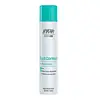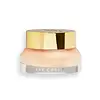What's inside
What's inside
 Key Ingredients
Key Ingredients

 Benefits
Benefits

 Concerns
Concerns

 Ingredients Side-by-side
Ingredients Side-by-side

Water
Skin ConditioningNiacinamide
SmoothingGlycerin
HumectantCaprylic/Capric Triglyceride
MaskingButyrospermum Parkii Butter
Skin ConditioningCetearyl Alcohol
EmollientCetyl Alcohol
EmollientPEG-20
HumectantLecithin
EmollientZinc PCA
HumectantAlpha-Arbutin
AntioxidantSqualene
EmollientPalmitoyl Tetrapeptide-7
Skin ConditioningPalmitoyl Tripeptide-1
Skin ConditioningPolyglyceryl-3 Stearate
EmulsifyingSodium Acrylates Crosspolymer-2
AbsorbentTocopherol
AntioxidantHydrogenated Lecithin
EmulsifyingGlyceryl Stearate Citrate
EmollientLaminaria Digitata Extract
Skin ProtectingCarbomer
Emulsion StabilisingSodium Hydroxide
BufferingDisodium EDTA
Phenoxyethanol
PreservativeCetyl-Pg Hydroxyethyl Palmitamide
Skin ConditioningButylene Glycol
HumectantPolysorbate 20
EmulsifyingWater, Niacinamide, Glycerin, Caprylic/Capric Triglyceride, Butyrospermum Parkii Butter, Cetearyl Alcohol, Cetyl Alcohol, PEG-20, Lecithin, Zinc PCA, Alpha-Arbutin, Squalene, Palmitoyl Tetrapeptide-7, Palmitoyl Tripeptide-1, Polyglyceryl-3 Stearate, Sodium Acrylates Crosspolymer-2, Tocopherol, Hydrogenated Lecithin, Glyceryl Stearate Citrate, Laminaria Digitata Extract, Carbomer, Sodium Hydroxide, Disodium EDTA, Phenoxyethanol, Cetyl-Pg Hydroxyethyl Palmitamide, Butylene Glycol, Polysorbate 20
Water
Skin ConditioningHelianthus Annuus Seed Oil
EmollientCaprylic/Capric Triglyceride
MaskingPEG-7 Glyceryl Cocoate
EmulsifyingButylene Glycol
HumectantButyrospermum Parkii Butter
Skin ConditioningNiacinamide
SmoothingGlyceryl Stearate Se
EmulsifyingHydrogenated Jojoba Oil
AbrasiveIsopropyl Isostearate
EmollientSqualane
EmollientHydroxyethyl Acrylate/Sodium Acryloyldimethyl Taurate Copolymer
Emulsion StabilisingXanthan Gum
EmulsifyingLecithin
EmollientBenzyl Alcohol
PerfumingSodium PCA
HumectantPolysorbate 60
EmulsifyingDisodium EDTA
3-O-Ethyl Ascorbic Acid
Skin ConditioningDehydroacetic Acid
PreservativeTocopherol
AntioxidantSorbitan Isostearate
EmulsifyingSodium Benzoate
MaskingPotassium Sorbate
PreservativeCI 19140
Cosmetic ColorantCI 16035
Cosmetic ColorantWater, Helianthus Annuus Seed Oil, Caprylic/Capric Triglyceride, PEG-7 Glyceryl Cocoate, Butylene Glycol, Butyrospermum Parkii Butter, Niacinamide, Glyceryl Stearate Se, Hydrogenated Jojoba Oil, Isopropyl Isostearate, Squalane, Hydroxyethyl Acrylate/Sodium Acryloyldimethyl Taurate Copolymer, Xanthan Gum, Lecithin, Benzyl Alcohol, Sodium PCA, Polysorbate 60, Disodium EDTA, 3-O-Ethyl Ascorbic Acid, Dehydroacetic Acid, Tocopherol, Sorbitan Isostearate, Sodium Benzoate, Potassium Sorbate, CI 19140, CI 16035
 Reviews
Reviews

Ingredients Explained
These ingredients are found in both products.
Ingredients higher up in an ingredient list are typically present in a larger amount.
Butylene Glycol (or BG) is used within cosmetic products for a few different reasons:
Overall, Butylene Glycol is a safe and well-rounded ingredient that works well with other ingredients.
Though this ingredient works well with most skin types, some people with sensitive skin may experience a reaction such as allergic rashes, closed comedones, or itchiness.
Learn more about Butylene GlycolThis ingredient is also known as shea butter. It is an effective skin hydrator and emollient.
Emollients help soothe and soften your skin. It does this by creating a protective film on your skin. This barrier helps trap moisture and keeps your skin hydrated. Emollients may be effective at treating dry or itchy skin.
Shea butter is rich in antioxidants. Antioxidants help fight free-radicals, or molecules that may harm the body. It is also full of fatty acids including stearic acid and linoleic acid. These acids help replenish the skin and keep skin moisturized.
While Shea Butter has an SPF rating of about 3-4, it is not a sunscreen replacement.
Shea butter may not be fungal acne safe. We recommend speaking with a professional if you have any concerns.
Learn more about Butyrospermum Parkii ButterThis ingredient is an emollient, solvent, and texture enhancer. It is considered a skin-softener by helping the skin prevent moisture loss.
It helps thicken a product's formula and makes it easier to spread by dissolving clumping compounds.
Caprylic Triglyceride is made by combining glycerin with coconut oil, forming a clear liquid.
While there is an assumption Caprylic Triglyceride can clog pores due to it being derived from coconut oil, there is no research supporting this.
Learn more about Caprylic/Capric TriglycerideDisodium EDTA plays a role in making products more stable by aiding other preservatives.
It is a chelating agent, meaning it neutralizes metal ions that may be found in a product.
Disodium EDTA is a salt of edetic acid and is found to be safe in cosmetic ingredients.
Learn more about Disodium EDTALecithin is a term for a group of substances found in the cell membranes of plants, animals, and humans. They are made up of mixture of phospholipids.
This ingredient has emollient and emulsifying properties.
As an emollient, lecithen helps soften the skin and creates a barrier to keep moisture in.
As an emulsifier, it also helps prevent water and oil ingredients from separating. Lecithin can also help ingredients be better absorbed by the skin.
This is because the phospholipids in lecithin produce liposomes. Liposomes help other ingredients get through the skin barrier.
Depending on the source of this ingredient, lecithin may not be fungal acne safe. This is because some sources of lecithin come from soybean oil, which may feed the malassezia yeast that feeds fungal acne.
We recommend reaching out to the brand you are purchasing from to inquire about the source of their lecithin.
Some other names for this ingredient include soy lecithin and deoiled soy lecithin.
Learn more about LecithinNiacinamide is a multitasking form of vitamin B3 that strengthens the skin barrier, reduces pores and dark spots, regulates oil, and improves signs of aging.
And the best part? It's gentle and well-tolerated by most skin types, including sensitive and reactive skin.
You might have heard of "niacin flush", or the reddening of skin that causes itchiness. Niacinamide has not been found to cause this.
In very rare cases, some individuals may not be able to tolerate niacinamide at all or experience an allergic reaction to it.
If you are experiencing flaking, irritation, and dryness with this ingredient, be sure to double check all your products as this ingredient can be found in all categories of skincare.
When incorporating niacinamide into your routine, look out for concentration amounts. Typically, 5% niacinamide provides benefits such as fading dark spots. However, if you have sensitive skin, it is better to begin with a smaller concentration.
When you apply niacinamide to your skin, your body converts it into nicotinamide adenine dinucleotide (NAD). NAD is an essential coenzyme that is already found in your cells as "fuel" and powers countless biological processes.
In your skin, NAD helps repair cell damage, produce new healthy cells, support collagen production, strengthen the skin barrier, and fight environmental stressors (like UV and pollution).
Our natural NAD levels start to decline with age, leading to slower skin repair, visible aging, and a weaker skin barrier. By providing your skin niacinamide, you're recharging your skin's NAD levels. This leads to stronger, healthier, and younger looking skin.
Another name for vitamin B3 is nicotinamide. This vitamin is water-soluble and our bodies don't store it. We obtain Vitamin B3 from either food or skincare. Meat, fish, wheat, yeast, and leafy greens contain vitamin B3.
The type of niacinamide used in skincare is synthetically created.
Learn more about NiacinamideTocopherol (also known as Vitamin E) is a common antioxidant used to help protect the skin from free-radicals and strengthen the skin barrier. It's also fat soluble - this means our skin is great at absorbing it.
Vitamin E also helps keep your natural skin lipids healthy. Your lipid skin barrier naturally consists of lipids, ceramides, and fatty acids. Vitamin E offers extra protection for your skin’s lipid barrier, keeping your skin healthy and nourished.
Another benefit is a bit of UV protection. Vitamin E helps reduce the damage caused by UVB rays. (It should not replace your sunscreen). Combining it with Vitamin C can decrease sunburned cells and hyperpigmentation after UV exposure.
You might have noticed Vitamin E + C often paired together. This is because it is great at stabilizing Vitamin C. Using the two together helps increase the effectiveness of both ingredients.
There are often claims that Vitamin E can reduce/prevent scarring, but these claims haven't been confirmed by scientific research.
Learn more about TocopherolWater. It's the most common cosmetic ingredient of all. You'll usually see it at the top of ingredient lists, meaning that it makes up the largest part of the product.
So why is it so popular? Water most often acts as a solvent - this means that it helps dissolve other ingredients into the formulation.
You'll also recognize water as that liquid we all need to stay alive. If you see this, drink a glass of water. Stay hydrated!
Learn more about Water